Cement and pig consumption reveal China's huge changes
- Published
When China's President Xi Jinping visits the US this week, it will be a meeting of the world's two biggest economies. Yet, compared with America, China's economic expansion has happened at breakneck speed.
It has sparked mass urbanisation and led to tens of millions of rural workers heading to the cities to find work. This is the story of China's astounding transformation - in pictures, interactive graphics and video.
Urban centres over a million people: 1970-2030
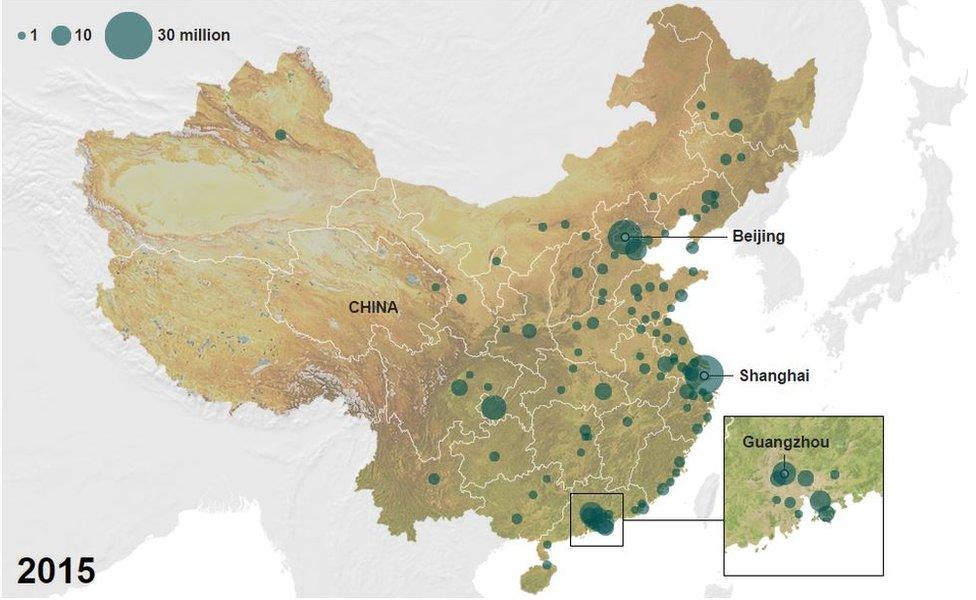
Tap here, external for an interactive version of the map.
According to UN data, the number of urban centres in China with a population of one million or more has leapt from 16 in 1970 to 106 in 2015. This compares to 45 in the US, and about 55 in Europe.
Hungry for concrete

Tap here, external for an interactive version of the graphic.
China's mass migration has been accompanied by a rapid construction boom.
How did China manage to build so quickly? Well, here's an example of a tower block that took just 19 days to build:
This Broad Group tower block in Changsha was built at the rate of three storeys a day and took just 19 days in total
Read more about Chairman Zhang's flatpack skyscrapers
But although homes are being built, that does not mean people are living in them - many newly-built towns, developments and shopping malls lie empty, and have become nicknamed "ghost cities".
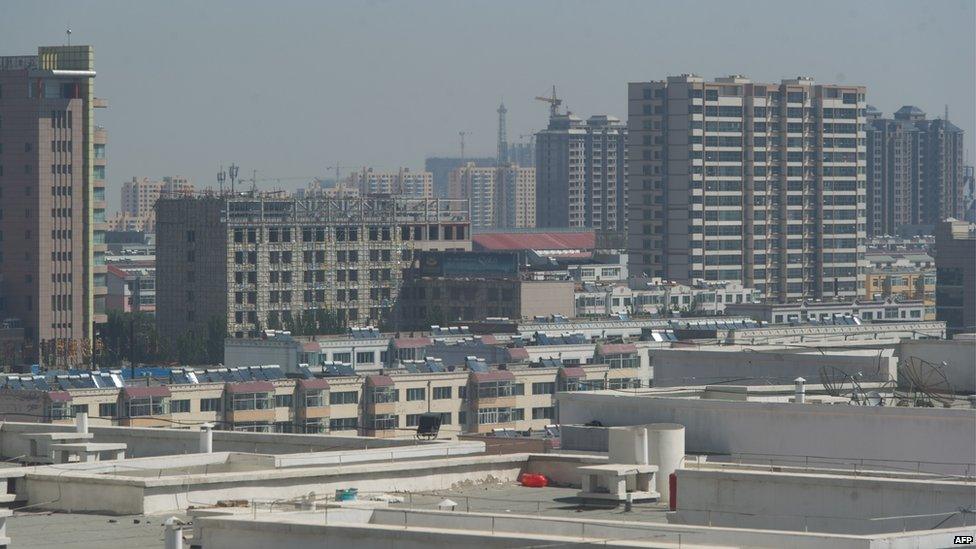
The city of Ordos has been described as China's largest "ghost city"
Smoggy days
China's economic growth has also come at a cost to the environment - pollution levels have soared, much of it due to the coal-fired power stations which China relies on for its energy needs.
One particularly bad bout of smog in Beijing in 2013 was caught by Nasa's satellite cameras:
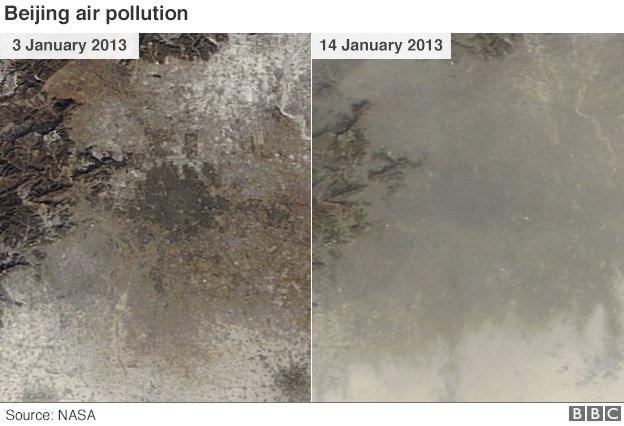
The satellite images over Beijing show the haze and fog worsening over January 2013 - the picture on the right shows grey and brown smog blotting out much of the city below.
China is attempting to cut pollution and has shut thousands of coal-burning factories.
However, only eight out of the 74 biggest cities passed the government's basic air quality standards in 2014, according to the environment ministry.

At the US embassy in Beijing, for example, the air quality was at levels considered unhealthy, very unhealthy or hazardous by US standards, for a majority of the time - although the overall number of unhealthy days has dropped since 2008, when the embassy first began collecting the data.
China began to release similar air quality readings, external in 2012. It says limits to emissions and the closure of coal plants have helped reduce air pollution in 2015, external.
Getting richer
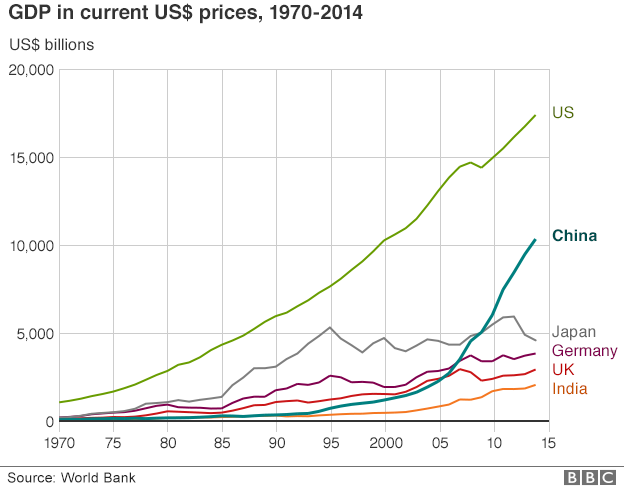
The Communist Party began to introduce capitalist market principles in 1978. After opening up to foreign investment in the 1980s, China became one of the world's largest manufacturers, as factories took advantage of low labour costs.
China's economy grew at an average rate of 10% a year for the three decades up to 2010, although growth has since slowed down.
In recent years it overtook Japan to become the world's second-largest economy - although its GDP per capita remains well below those of the US, Japan, Germany and the UK. Dramatic stock market falls over the summer have prompted questions about the lasting strength of China's economic transformation.
White Horse Village - a special report on China's change

Happy holidays

China's growing GDP has been accompanied by rising disposable incomes - China has the world's highest number of outbound tourists, and its visitors rank first in the world for expenditure, spending $165bn during holidays.
Popular destinations include Hong Kong, Japan, France, South Korea, the US and Thailand.
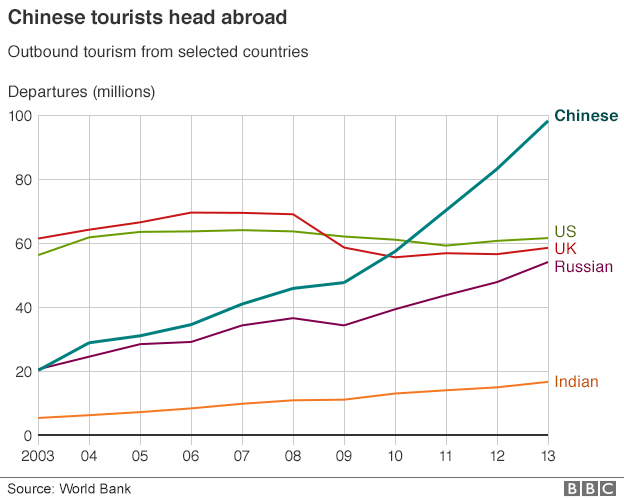
Pigging out
Pork has long been the favourite meat of choice in China, but low incomes used to mean that they were a luxury food reserved for special occasions.
Not any more. As the population's spending power has increased, the amount of pork eaten has soared - and China now accounts for about half the pigs consumed in the world.
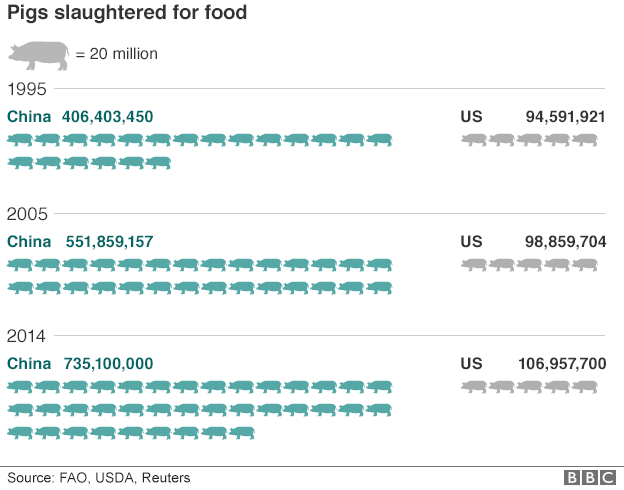
Left behind?
Despite the rise in personal income, not everyone has benefited equally- the gap in disposable incomes between China's rural and urban households has widened sharply since 1990.

Farming on the outskirts of Chongqing
China's household registration system, known as "hukou", exacerbates the divide, because it prevents most migrant workers from accessing healthcare, housing and welfare in the cities where they are employed.
And mass migration to the cities also affects the younger generation - China has 61 million "left behind children" who live in rural villages without their parents.
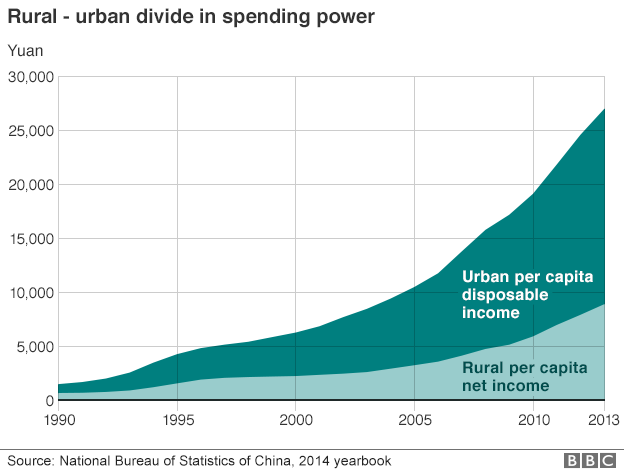
Data journalism by Christine Jeavans, design by Salim Qurashi, James Offer, text by Helier Cheung, web development by Marcelo Zanni.